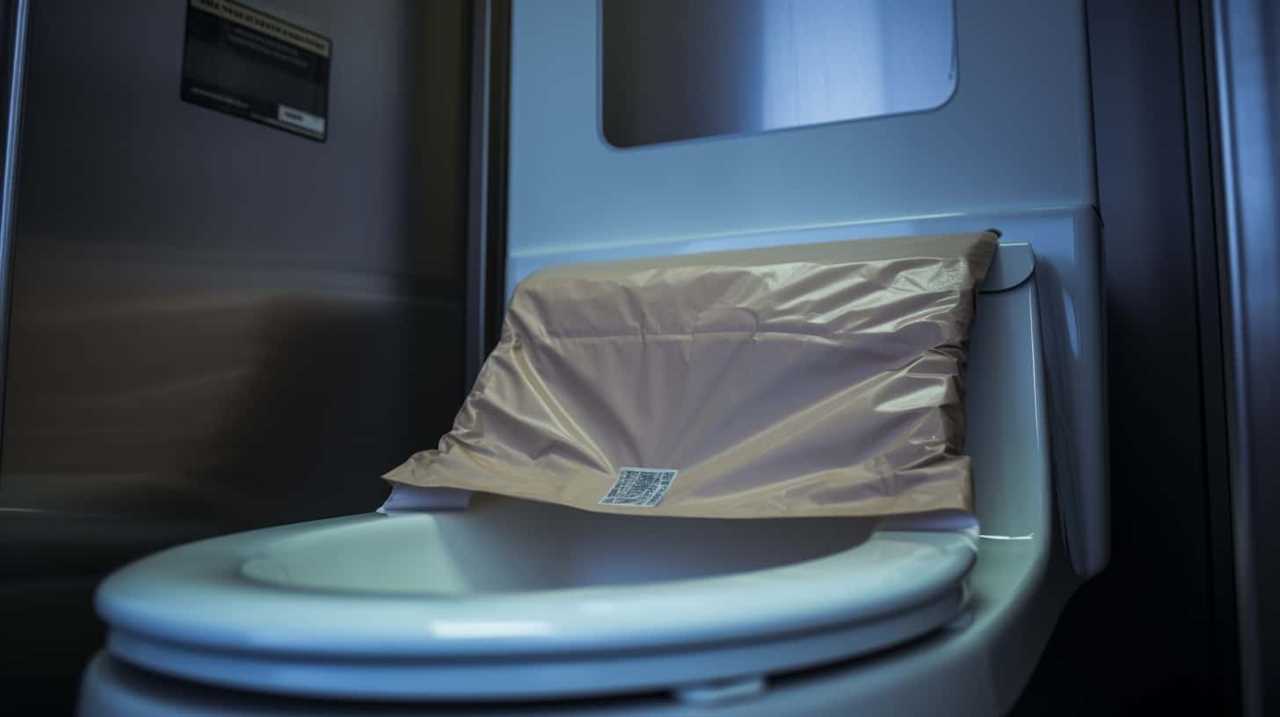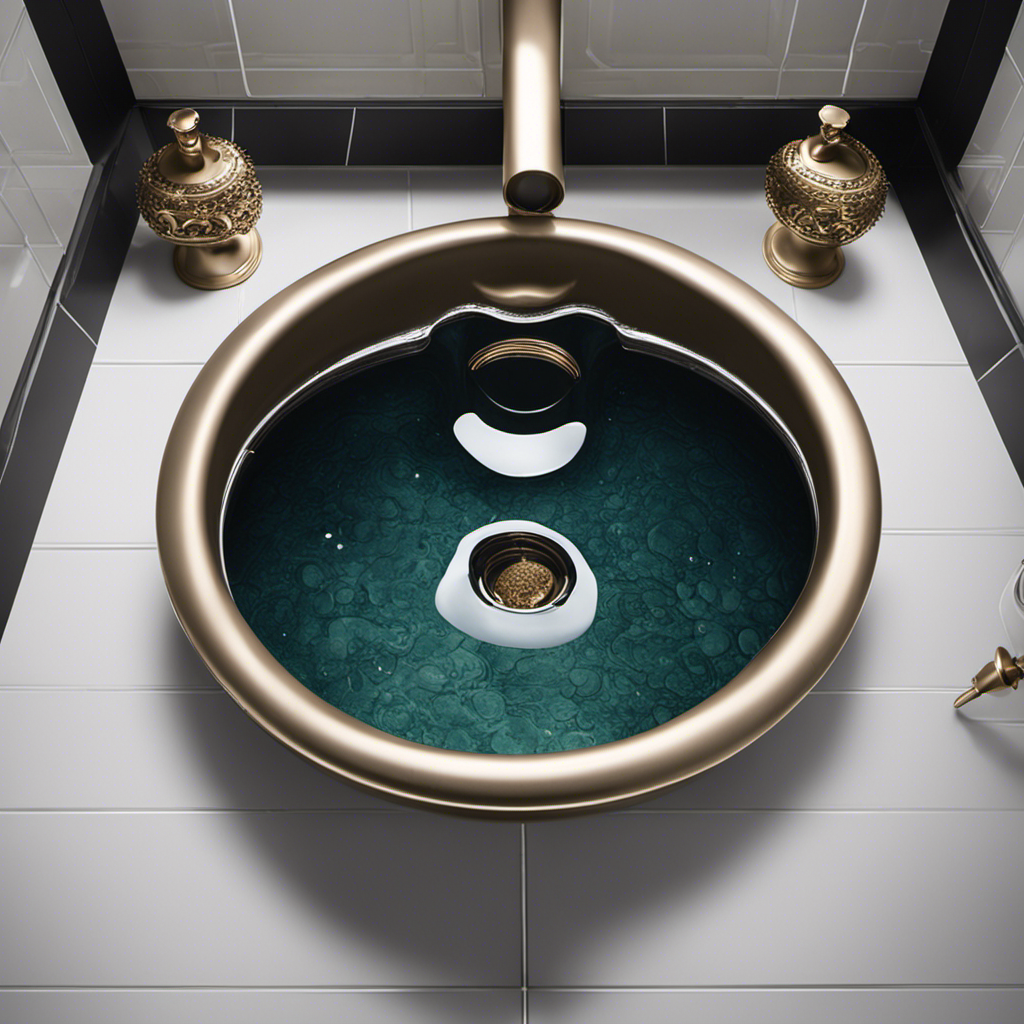We’ve all experienced it – a clogged toilet that won’t flush. But don’t worry, power flush toilets are here to the rescue!
Did you know that power flush toilets use 1.6 gallons of water per flush, compared to the average 3-5 gallons? That’s a 50-70% reduction in water usage!
In this article, we’ll explore the advantages of power flush toilets, how they work, tips for choosing the right one, and maintenance advice.
Get ready to master the art of efficient flushing!

Key Takeaways
- Power flush toilets reduce water consumption by 50-70%.
- They provide more thorough and efficient removal of waste.
- Power flush toilets contribute to environmental sustainability.
- They minimize the risk of clogging and reduce the need for maintenance and repairs.
The Advantages of Power Flush Toilets
Power flush toilets offer significant benefits in terms of water conservation and improved flushing efficiency. These toilets are equipped with water-saving features that help reduce water consumption. Compared to traditional flush toilets, power flush toilets use a higher-pressure flush mechanism, ensuring a more thorough and efficient removal of waste with less water. This is achieved through the use of pressurized air or water, combined with gravity, to create a powerful flush.
The increased force of the flush allows for better clearing of the bowl, reducing the need for multiple flushes. By using less water per flush, power flush toilets help conserve water resources and contribute to environmental sustainability. Additionally, their improved flushing efficiency minimizes the risk of clogging and reduces the need for maintenance and repairs.
How Power Flush Technology Works
To understand how power flush technology works, we can delve into the mechanics behind its efficient and thorough flushing mechanism. Power flush toilets utilize a combination of water pressure and gravity to provide a robust flushing action. Here’s how it works:
- Increased water pressure: Power flush toilets use a higher water pressure than traditional toilets. This allows for a more forceful and thorough flush, ensuring that waste is effectively removed from the bowl.
- Dual flush system: Power flush toilets typically have a dual flush system, which allows users to choose between a lighter flush for liquid waste and a stronger flush for solid waste. This helps to conserve water while still providing a powerful flush.
- Larger trapway and flapper valve: Power flush toilets feature a larger trapway and flapper valve, which allows for a larger volume of water to be released during each flush. This helps to prevent clogs and ensure efficient waste removal.
- Troubleshooting: If you experience issues with your power flush toilet, common troubleshooting steps include checking the water supply, inspecting the flush valve, and ensuring proper installation and adjustment of the flushing mechanism.
Power flush technology offers several advantages over traditional toilets, including superior flushing power and water efficiency. By understanding how it works and knowing how to troubleshoot common issues, you can ensure optimal performance and functionality of your power flush toilet.
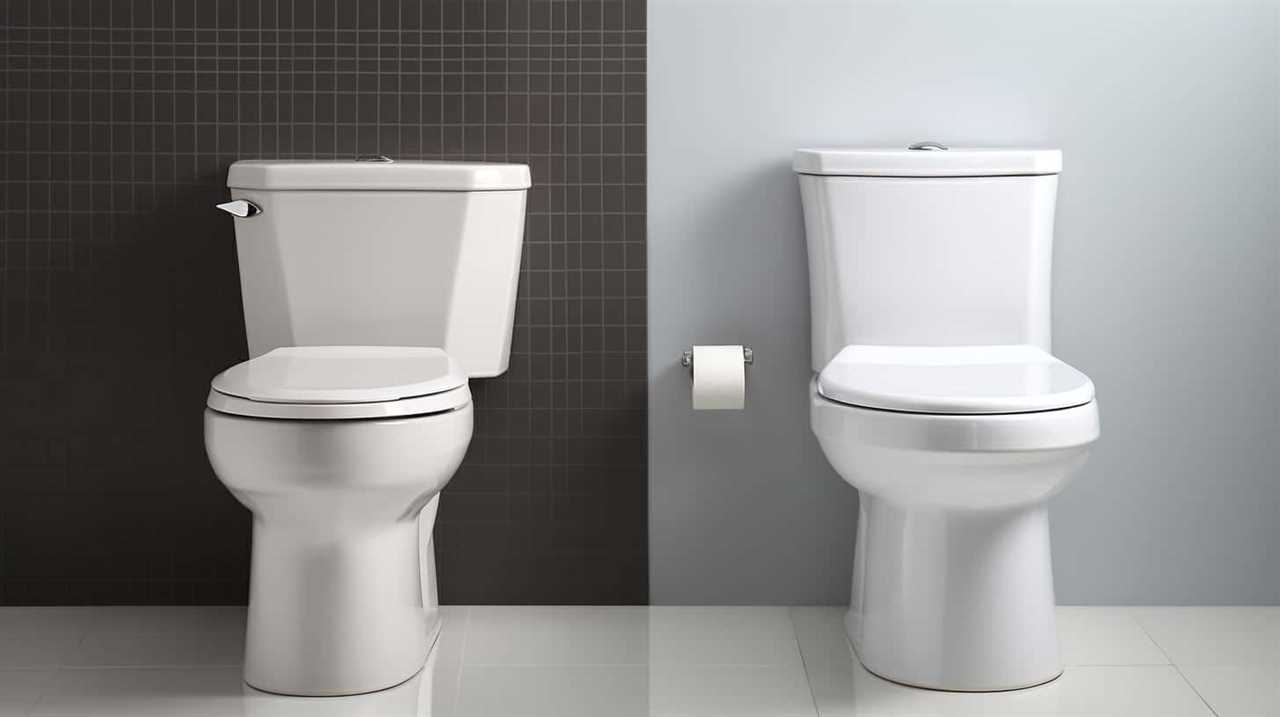
Choosing the Right Power Flush Toilet
When considering power flush toilets, we should evaluate the factors that are important to us in order to choose the right one. One crucial aspect to consider is the brand of the toilet. Well-known toilet brands such as Kohler, Toto, and American Standard are known for their quality and durability.
Another important factor to look at is water efficiency. Look for toilets that are labeled as WaterSense certified, as they use less water per flush without compromising on performance. These toilets typically use 1.28 gallons of water per flush, compared to older models that can use up to 3.5 gallons.
By choosing a power flush toilet from a reputable brand with water efficiency in mind, you can ensure a reliable and environmentally friendly option for your bathroom.
Now, let’s move on to the installation and maintenance tips for power flush toilets.
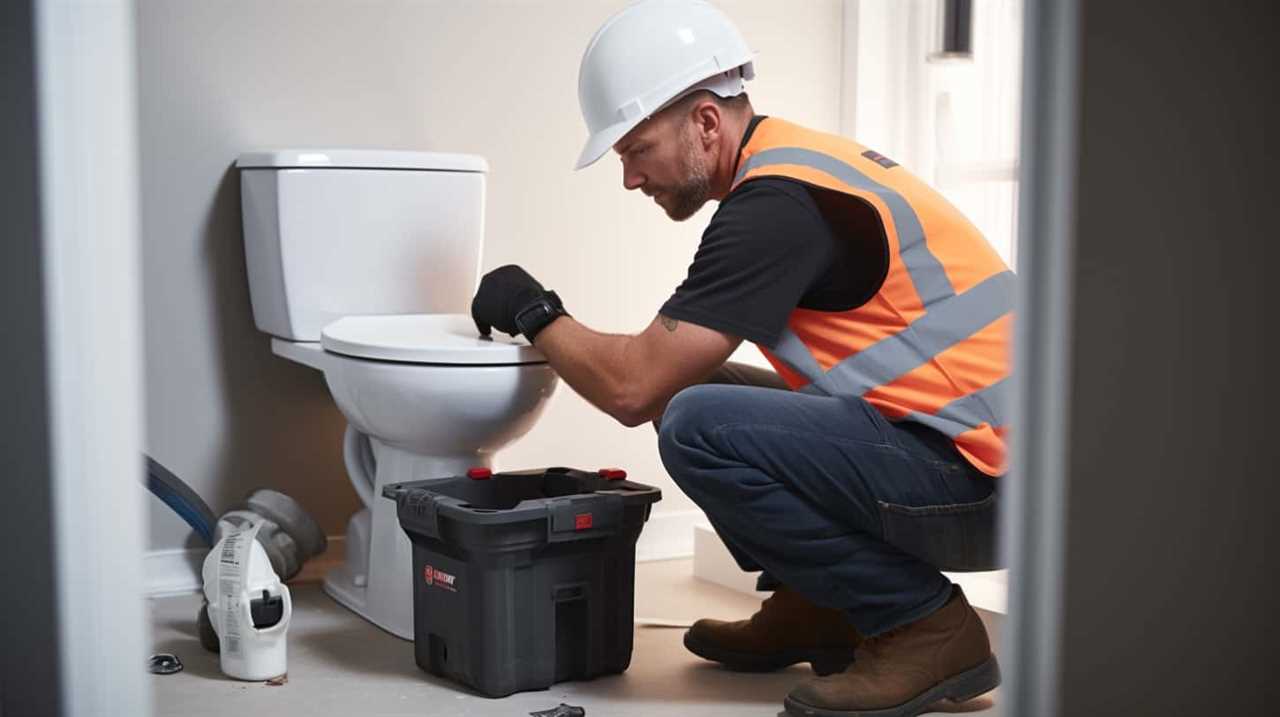
Installation and Maintenance Tips for Power Flush Toilets
Now let’s delve into the important aspects of installing and maintaining power flush toilets. Here are some key tips to ensure proper installation and effective maintenance:
- Proper installation: Ensure that the power flush toilet is securely attached to the floor and that all connections are tight. Follow the manufacturer’s instructions carefully to prevent leaks and ensure optimal performance.
- Regular cleaning: Clean the toilet bowl and tank regularly to prevent buildup of mineral deposits and bacteria. Use non-abrasive cleaners and avoid bleach, as it can damage the flushing mechanism.
- Toilet troubleshooting: Familiarize yourself with common power flush issues, such as weak flushes or continuous running. Check the flapper valve, water level, and flush mechanism for any malfunctions. In case of problems, consult the manufacturer’s troubleshooting guide or seek professional assistance.
- Maintenance schedule: Create a maintenance schedule to regularly inspect and replace worn-out parts such as flapper valves, fill valves, and seals. This will help prevent unexpected breakdowns and keep your power flush toilet operating smoothly.
Frequently Asked Questions About Power Flush Toilets
Here are some common questions people have about power flush toilets.
- How do I troubleshoot my power flush toilet?
If your toilet isn’t flushing properly, check for any clogs in the trapway or the drain pipe. You can use a plunger or a plumbing snake to clear any blockages. Also, make sure that the water supply valve is fully open. - What’s the difference between power flush and gravity flush toilets?
Power flush toilets use pressurized air to force water into the bowl, providing a more powerful and efficient flush. Gravity flush toilets rely on gravity to empty the bowl, which can sometimes result in less effective flushing. - Are power flush toilets more expensive than gravity flush toilets?
Yes, power flush toilets are generally more expensive than gravity flush toilets due to their advanced flushing mechanism. However, they can also save water in the long run by requiring fewer flushes.
Remember to consult a professional plumber if you encounter any persistent issues with your power flush toilet.
Frequently Asked Questions
How Much Water Does a Power Flush Toilet Use Compared to a Traditional Toilet?
Power flush toilets are more water efficient compared to traditional toilets. They use less water per flush, reducing environmental impact. The exact amount of water used will depend on the specific model and settings.
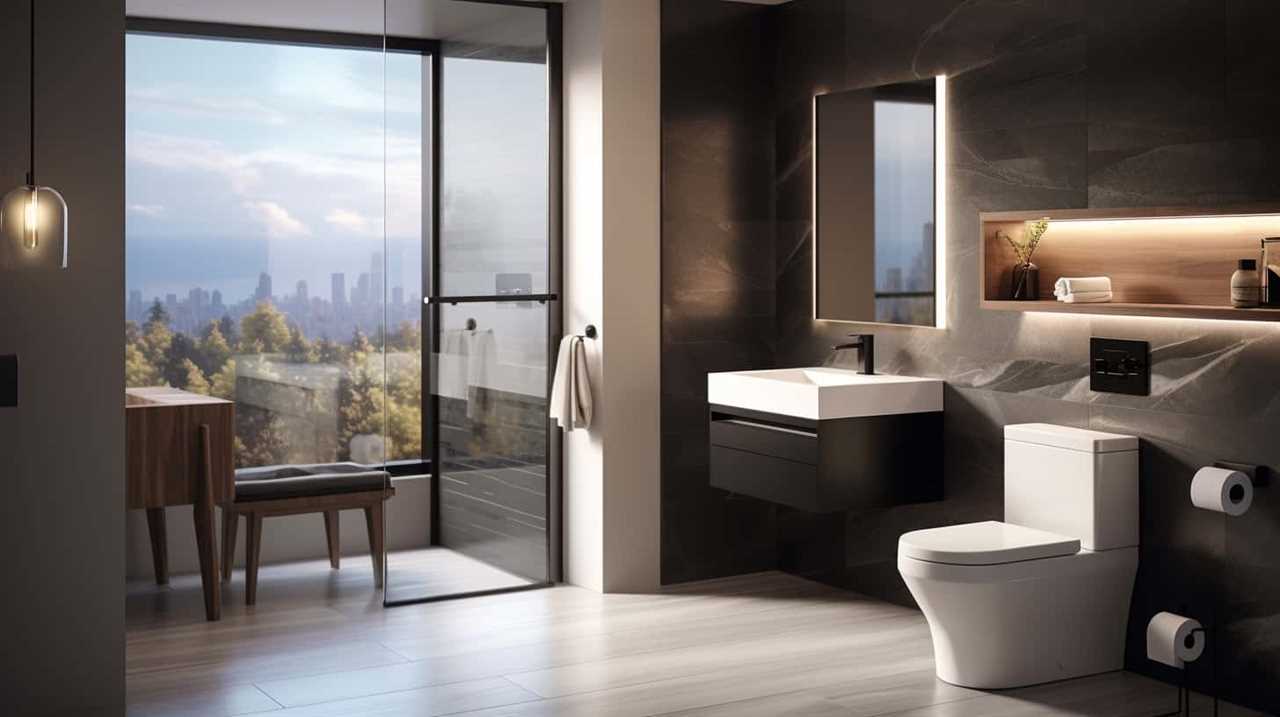
Can a Power Flush Toilet Be Installed in an Older Home With Existing Plumbing?
Yes, a power flush toilet can be retrofitted into an older home with existing plumbing. However, installation challenges may arise due to differences in pipe sizes and water pressure requirements.
Are Power Flush Toilets More Expensive Than Regular Toilets?
Power flush toilets have their pros and cons. They can be more expensive compared to regular toilets, but they offer efficient water usage and better waste removal. When comparing power flush toilets to dual flush toilets, power flush toilets are generally more powerful.
Can a Power Flush Toilet Handle Larger Waste or Clogs Better Than a Traditional Toilet?
Yes, power flush toilets are designed to handle larger waste and clogs better than traditional toilets. They utilize a powerful flushing mechanism that creates a strong force to effectively remove waste and prevent clogs.
Is It Possible to Retrofit a Regular Toilet Into a Power Flush Toilet?
Retrofitting a regular toilet into a power flush toilet poses challenges due to the complex design and plumbing requirements. However, the benefits of power flush toilets, such as superior flushing power and clog prevention, make the effort worthwhile.
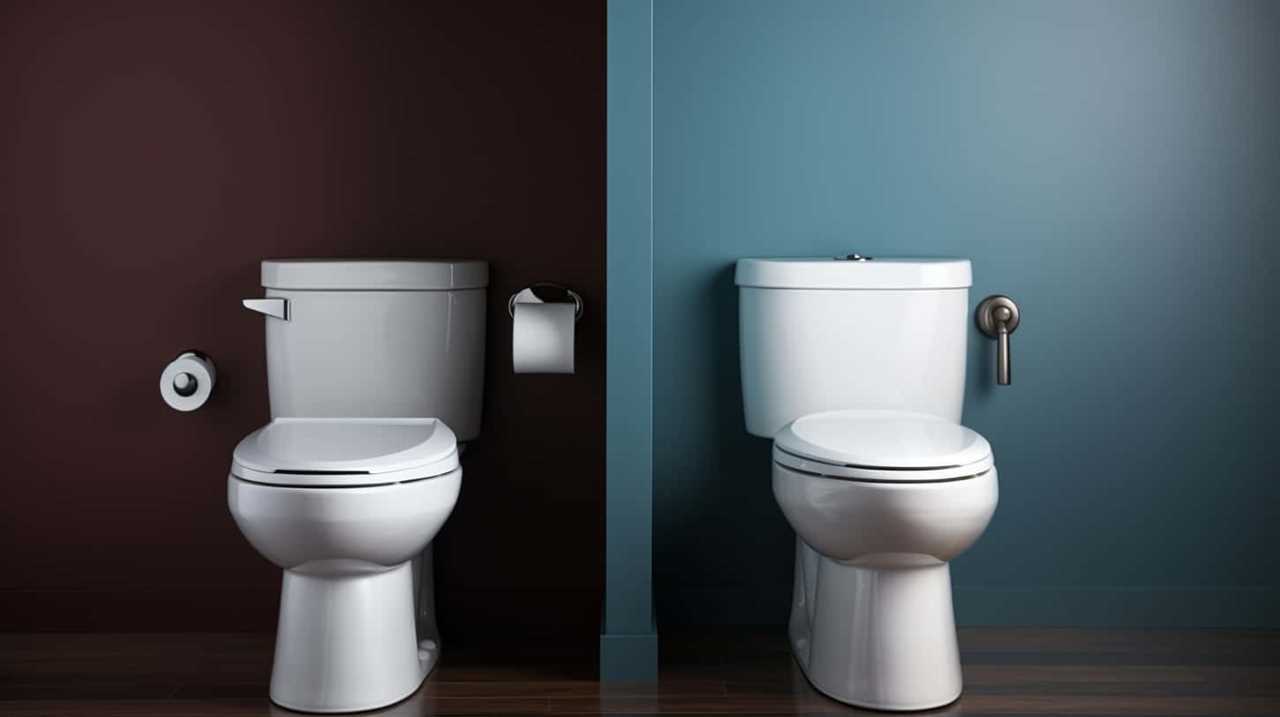
Conclusion
In conclusion, power flush toilets offer numerous advantages, such as efficient water usage and effective waste removal.
With their advanced technology, these toilets ensure a cleaner and more hygienic bathroom experience.
When choosing a power flush toilet, consider factors like water pressure and sizing requirements.
Proper installation and regular maintenance are crucial for optimal performance.
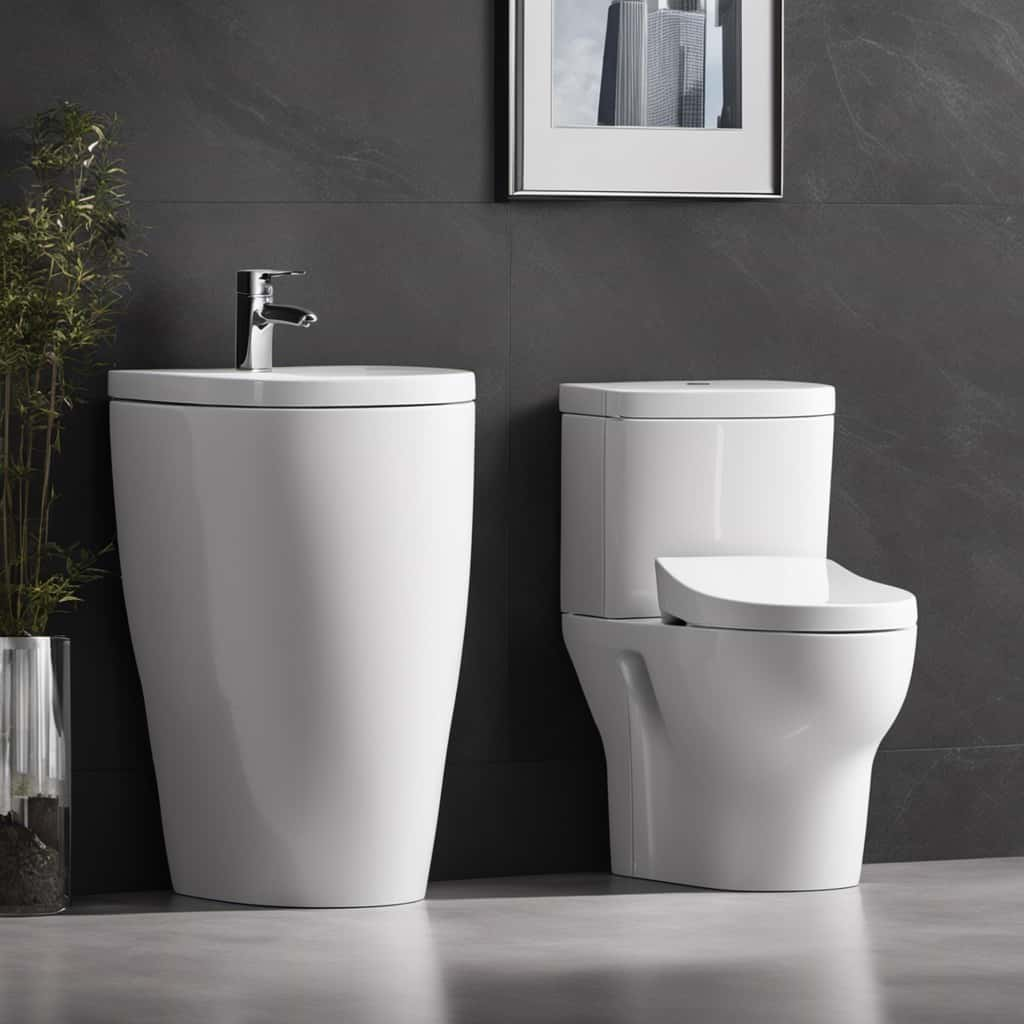
By embracing power flush toilets, we symbolize our commitment to environmental sustainability and improved sanitation standards.
